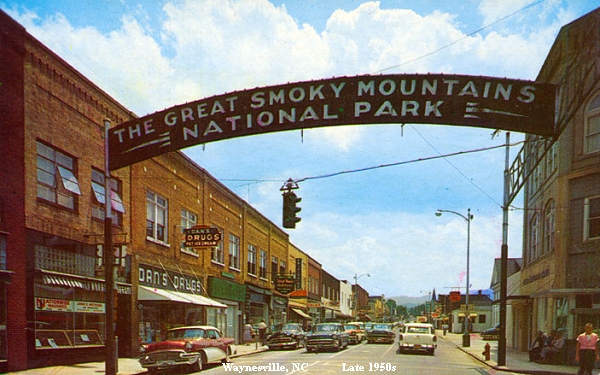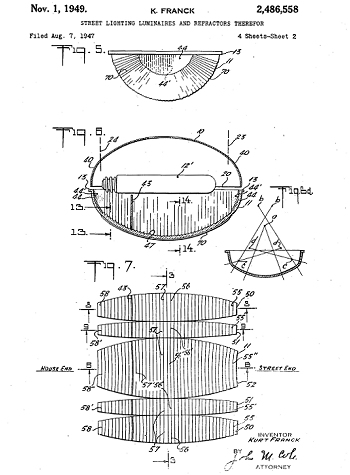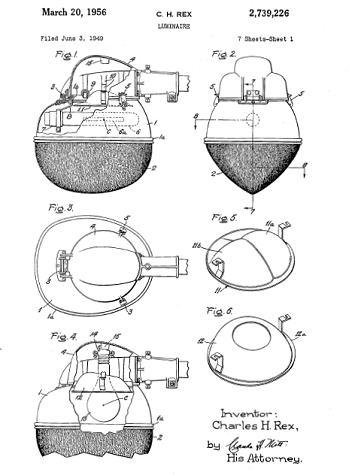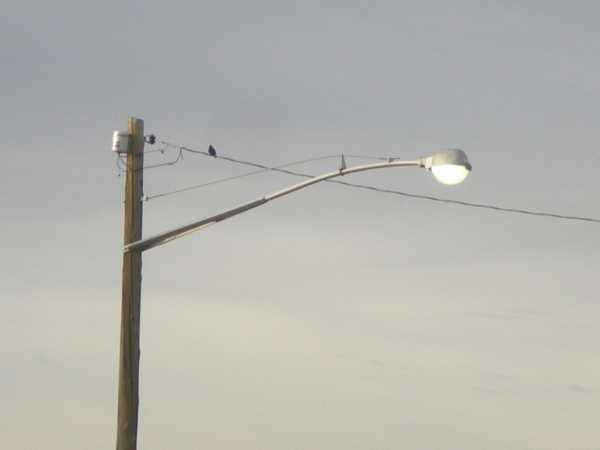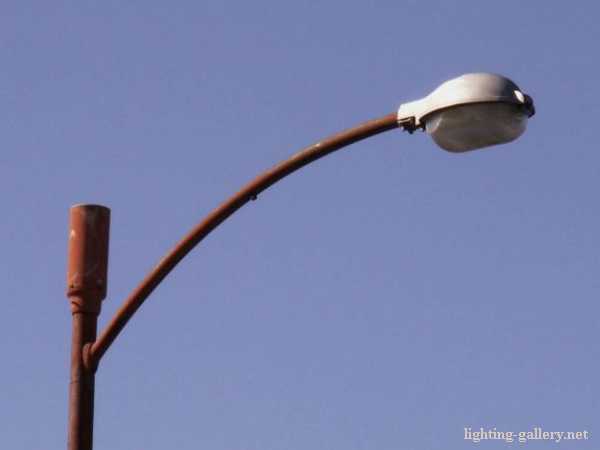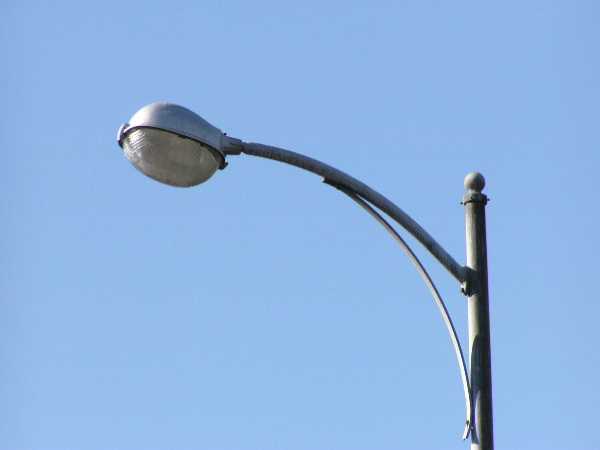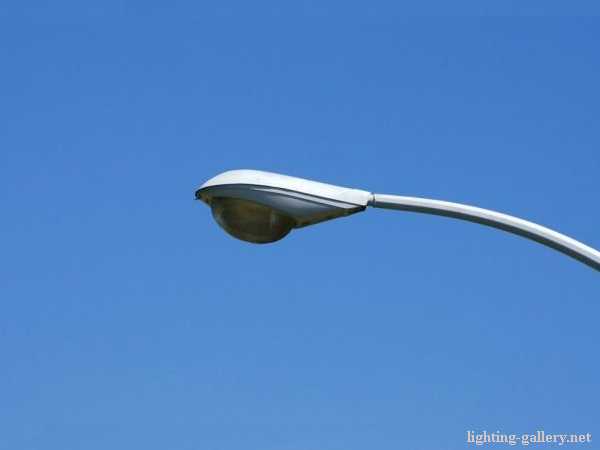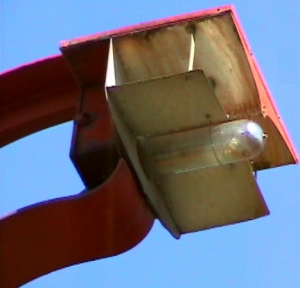Part Three
This document is a continuation from Part One In 1949, General Electric changed the game with respect to lighting business districts and arterial streets. Since the early 1900s inventors and designers had been experimenting with mercury vapor and other inert gasses as a source of light. Using the principle of the arc lamp, they could pass current through these gasses and they would glow. Mercury vapor gave off a comparatively bright light for the amount of current consumed. While some engineers worked on designing a more reliable mercury vapor lamp that produced less of a monochromatic color, others looked at the optical considerations. Nearly all street light designs were based on using incandescent lamps in which the actual light source (filament) was small. Mercury vapor lamps produced a comparatively long source of light, plus the lamp itself absorbed reflected light. In 1946 Kurt Franck designed what was termed as an ovate refractor. Its premise was to receive light from the "tube" shape of a mercury vapor lamp. In 1949 Charles Rex designed an entire luminaire based somewhat on Frank's ovate design for use with a 400 watt mercury vapor lamp. Rex designed lamps for General Electric. While it wasn't until 1956 that the US Patent Office recognized Rex' design as new and inventive and issued a patent, GE had already hit the ground running. |
Kurt Franck's ovate refractor.
|
Charles Rex' GE Form 109 Luminaire.
|
|
The Form 109 produced 23,000 lumens of light, an astounding amount of light production from a single street light luminaire, and when mounted at the correct elevation, the Form 109 gave off a broad illumination pattern that was prismatically primarily directed along the street.
Line Material Co. followed suit with its "Ovalite" series of mercury vapor lamps and Westinghouse hit the market with its OV-20 lamp. |
Line Material "Ovalite."
|
Westinghouse OV-20.
|
| Then along came the cobraheads, a larger but streamlined design that could also contain the lamp's ballast and starting capacitors. GE used similar optics on two models, the Form 400 that was an externally ballasted 400 watt mercury vapor lamp and the M-400, that enclosed the same lamp with a smaller ballast and capacitor lighting package. |
GE Form 400
|
GE M-400.
|
|
Concurrent with the develop of mercury vapor lamps was the development of the high intensity fluorescent lamp. These lamps were relatively popular in the 1950s and 60s as they gave off a pleasant white light with little relative glare and high color renditioning. They were preferred in downtown areas where it was desirable to light streets, sidewalks and storefronts.
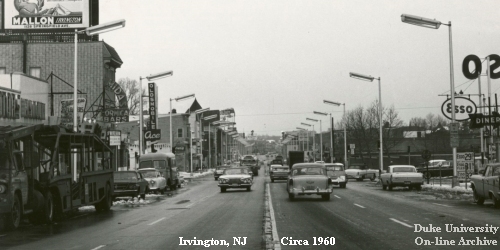
Fluorescent street lamps had issues with extreme temperatures, experiencing reduced light output in extremely cold weather and ballast failures in extremely hot weather. Ultimately the simpler mercury vapor and sodium vapor lamps won the market. Low pressure sodium vapor (LPS) lighting was being developed as far back as the 1920s. In 1934 Cromwell Halvorson developed a practical low pressure sodium lamp for GE that was widely accepted and was installed in architecturally significant locations such as the Golden Gate Bridge. Low pressure sodium generated significant light output with very low power requirements. GE's M2 lamp only required 70 watts of power. The monochromatic amber light produced very little undesirable light pollution. However monocrhomatic lighting provides poor color rendition on the objects being illuminated. Subsequent lighting safety studies revealed that the breaking reaction time under more full spectrum lighting improved by 25 percent as compared to monochromatic lighting. Engineers discovered that high pressure sodium vapor (HPS) was still very efficient in light produced per watt of power consumed, and HPS color was significantly better than with earlier LPS lamps. HPS was also much more efficient than mercury vapor. A 150 watt HPS lamp would produce more light than a 250 watt mercury vapor lamp, so HPS eventually replaced most of the LPS and mercury vapor luminaires. |
A GE M2 Luminaire on the Golden Gate Bridge
|
HPS luminaire with bucket type refractor
|
